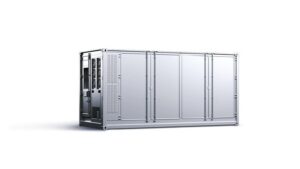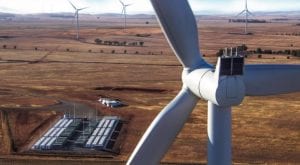New figures from leading clean energy analysts Bloomberg New Energy Finance (BNEF) reveals that, for the first time, battery pack prices have dipped below $US100/kWh in China’s e-bus market, a level that is expected to become the average price in the market by 2023.
BloombergNEF published its latest Battery Price Survey on Wednesday, highlighting the dramatic pricing trends in what is arguably one of the most important clean energy sectors at the moment.
Looking at battery prices for passenger EVs, e-buses, commercial EVs, and stationary storage, the report revealed that, having dropped 89% in real terms from a 2010 price of $US1,100 per kilowatt-hour, battery pack prices are now hanging around the $US137/kWh mark.
Further, BloombergNEF predicts battery pack prices will quickly begin navigating the magical $US100/kWh mark around 2023 – rendered in US dollars, as is generally the case for global clean technology analysis.
Remarkably, BloombergNEF reveals that battery pack prices have dropped below $US100/kWh for the first time in recent transactions in China, although the volume weighted average price for e-buses in China was slightly higher, at $US105/kWh.
The price reductions witnessed in 2020 were driven by increased order sizes, growth in BEV sales, and the introduction of new battery pack designs. Bloomberg pointed to new cathode chemistries and falling manufacturing costs which have helped to drive down prices in the near term.
Globally, battery EV (BEV) pack prices are $US126/kWh on a volume-weighted average basis, while at the battery cell level average BEV prices were hovering around $US100/kWh. According to Bloomberg, this means that, on average, the battery pack portion of the total BEV price accounts for 21%.
By 2023, BNEF expects average battery pack prices will reach $US101/kWh, at which point Bloomberg expects automakers will be able to begin producing and selling mass-market EVs at the same price and with the same margin as comparable internal combustion engine (ICE) vehicles in some global markets.
“It is a historic milestone to see pack prices of less than $US100/kWh reported. Within just a few years we will see the average price in the industry pass this point,” said James Frith, BNEF’s head of energy storage research and lead author of the report.
“What’s more, our analysis shows that even if prices for raw materials were to return to the highs seen in 2018, it would only delay average prices reaching $100/kWh by two years – rather than completely derailing the industry. The industry is becoming increasingly resilient to changing raw material prices, with leading battery manufacturers moving up the value chain and investing in cathode production or even mines.”
Unsurprisingly, given the continued and steady increase in demand, leading battery manufacturers are beginning to see gross margins of up to 20% while their battery manufacturing plants are operating at utilisation rates of over 85%.
This will be key if the industry is to continue seeing drops in cell and pack prices. However, if utilisation rates drop, equipment and depreciation costs begin to be spread out over fewer kilowatt-hours of manufactured cells.
“The increasingly diversified chemistries used in the market result in a wide range of prices,” said Daixin Li, a senior energy storage associate at BNEF.
“Battery manufacturers are racing to mass-produce higher energy-density batteries with some new chemistries such as lithium nickel manganese cobalt oxide – NMC (9.5.5) – and lithium nickel manganese cobalt aluminum oxide – NMCA – set to be mass-produced as early as 2021. Lithium iron phosphate – LFP – however plays as a cost-competitive alternative, contributing to the lowest reported cell prices of $80/kWh.”
However, Bloomberg is less certain as to how the global battery sector will seek to drive prices further down – to an expected $US58/kWh by 2030, according to Bloomberg’s predictions. This uncertainty is not because there is no way for the industry to drive prices down, but because there are several options and pathways down which the industry can move.
Bloomberg points to the possible adoption of solid-state batteries, which BNEF expects could be manufactured, if produced at scale, at 40% of the cost of current lithium-ion batteries. Such dramatic cost savings are driven by savings in the bill of materials and in the cost of production, equipment, and adoption of new high-energy density cathodes.
However, if solid-state batteries are to be adopted and play a role in the future uptake of battery storage and electric vehicles, a supply chain must be established for key materials such as solid electrolytes not used in traditional lithium-ion batteries.
Current supply chains are dominated by China, which boasts a domestic battery demand of 72GWh – ensuring the country’s successful supply and demand dynamic – and controls 80% of the world’s raw material refining capacity, 77% of the world’s cell capacity, and 60% of the world’s component manufacturing.
Unfortunately, despite its position as a raw material giant – one of the few countries in the world home to all the components of battery storage – Australia only manages a position of 11 on the overall supply rankings.
As highlighted in BNEF’s Global Lithium-Ion Battery Supply Chain Ranking, published in September, Australia ranks number 2 in terms of raw materials (behind China) but has an environmental score of only 21. Unsurprisingly, then, BNEF does not expect Australia’s position on its lithium-ion battery supply chain to change anytime soon, based on current policies.










